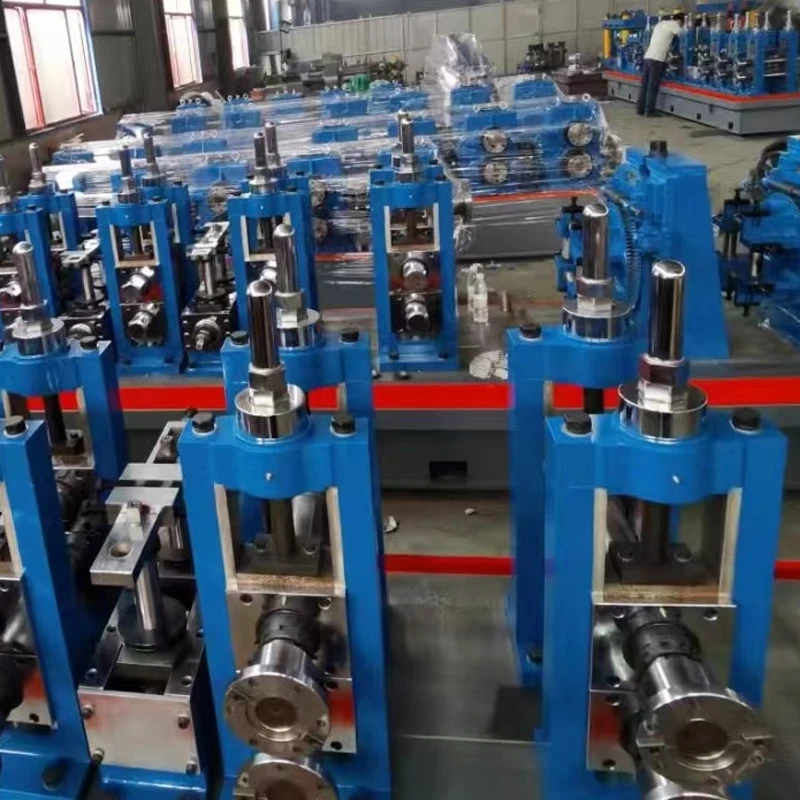Innovative Techniques in Roll Forming for Enhanced Manufacturing Efficiency
Exploring the Wonders of Roll Forming A Modern Manufacturing Marvel
Roll forming is a highly efficient and versatile manufacturing process that involves the continuous bending of a long strip of metal into desired shapes. This technique has transformed the way industries approach metal fabrication, offering precision, strength, and cost-effectiveness. As industries constantly seek innovative solutions to improve production methods and maintain quality, roll forming stands out as an essential process that serves diverse applications.
The Process of Roll Forming
At its core, roll forming is a process where a flat metal strip passes through a series of rollers, each designed to gradually bend and shape the material into the desired profile. The design of the rollers is crucial, as each set plays a specific role in shaping the metal strip through multiple passes. The process typically starts with a coil of metal, often made of steel, aluminum, or other materials suitable for forming. As the coil unwinds, it is fed into the roll forming machine, where it is subjected to a series of roller stations.
These roller stations are arranged in sequence, with each roller applying a specific amount of pressure to the strip. The gradual bending helps to distribute stress evenly across the material, leading to a uniform profile without compromising metal integrity. The process continues until the strip has achieved the desired shape, at which point it can be cut to length and prepared for delivery or further processing.
Advantages of Roll Forming
One of the most significant advantages of roll forming is its ability to produce complex shapes consistently and accurately. Because the process relies on continuous production, it allows for high-volume output with minimal waste. The precision of roll forming ensures that parts are made to exact specifications, which minimizes the need for additional machining or finishing processes.
Another notable benefit is the mechanical properties achieved through roll forming. The process imparts strength to the final product, as the material is subjected to cold working, which can enhance its yield strength. This characteristic is particularly beneficial in applications where durability and structural integrity are paramount.
Additionally, roll forming is a cost-effective solution, especially for large production runs. The initial setup may require a significant investment in tooling, such as the design and manufacturing of custom rollers. However, once the system is in place, the operational costs decrease, and the long-term savings become evident. It is also a relatively eco-friendly manufacturing process, as it generates less scrap metal compared to other metalworking methods.
roll forming

Applications of Roll Forming
The versatility of roll forming allows it to be used in a wide range of industries. Construction is one of the primary sectors that benefit from this process, with companies using roll-formed components for roofing, wall panels, and structural framing. These products are designed for easy installation, providing both functionality and aesthetic appeal.
Another significant application lies in the automotive industry, where roll-formed parts are essential for vehicle structural components, chassis parts, and various body panels. The precision and strength of roll-formed materials contribute to the overall safety and performance of vehicles, making it an invaluable manufacturing technique in modern automotive design.
The HVAC industry also utilizes roll forming to create ducts and ventilation systems. The ability to produce tailored shapes ensures that systems fit perfectly within building designs, enhancing energy efficiency and air distribution.
The Future of Roll Forming
As technology continues to evolve, so too does the roll forming process. Innovations such as computer-aided design (CAD) and advanced robotics are streamlining the design and manufacturing stages. These technologies enable manufacturers to create intricate designs that were once thought impossible while maintaining the high levels of precision and speed that roll forming is known for.
Moreover, the rise of automation and Industry 4.0 is set to revolutionize roll forming operations. By integrating smart manufacturing techniques, businesses can optimize production lines, minimize downtime, and respond to market demands swiftly.
Conclusion
Roll forming is a remarkable manufacturing process that embodies innovation, efficiency, and versatility. Its capacity to produce high-quality, precision-engineered components makes it indispensable across various industries. As technology advances, the roll forming process will continue to evolve, promising even greater capabilities and applications in the future. For industries looking to optimize their production and maintain competitiveness, embracing roll forming is undoubtedly a step in the right direction.
-
High Frequency Straight Seam Welded Pipe Production Line-BzZhou Xinghua Machinery Equipment Manufacturing Co., LTD.|line pipe steel&welded gas pipeNewsJul.30,2025
-
High Frequency Straight Seam Welded Pipe Production Line-BzZhou Xinghua Machinery Equipment Manufacturing Co., LTD.|High Precision&Automated SolutionsNewsJul.30,2025
-
High Frequency Straight Seam Welded Pipe Production Line - BzZhou Xinghua Machinery Equipment Manufacturing Co., Ltd.NewsJul.30,2025
-
High Frequency Straight Seam Welded Pipe Production Line-BzZhou Xinghua Machinery Equipment Manufacturing Co., LTD.|Precision Welding, High EfficiencyNewsJul.30,2025
-
High Frequency Straight Seam Welded Pipe Production Line|BzZhou Xinghua|Precision Welding&EfficiencyNewsJul.30,2025
-
High Frequency Straight Seam Welded Pipe Production Line - BzZhou Xinghua|Precision Engineering&EfficiencyNewsJul.30,2025


